The Corsair Carbide 400Q Case Review
by E. Fylladitakis on April 29, 2016 9:00 AM EST- Posted in
- Cases/Cooling/PSUs
- Corsair
- ATX
- E-ATX
- Carbide
The Interior of the Corsair Carbide 400Q
The side panels of the Carbide 400Q can be easily detached by removing two thumbscrews for each. Both of the side panels, and including the top panel cover and the faceplate, have a thin layer of sound dampening material applied to them. Considering the openings on the sides of the front panel and the rear of the case, the impact of the material on the acoustics of the case is unlikely to be very high, but every little bit can help.
The interior of the Carbide 400Q is all black, including every cable, screw and stand-off. The only parts breaking the blackness of the case are the grey impellers of the stock cooling fans. The metallic surfaces are sprayed with the same satin black paint as the exterior. The plastic covers across the PSU compartment and HDD cage are sprayed with the satin black paint as well, but it is not nearly as fingerprint resistant as the metallic parts of the case. Strangely, only the three main openings next to the motherboard feature rubber grommet covers. There are more openings next to those, as well as several more above and below the motherboard, none of which has a rubber grommet installed.
Lacking any front/external drive cages, the interior of the Carbide 400Q is very spacious, allowing for the installation of E-ATX motherboards. Graphics cards up to 370 mm long will fit as well, but note that the installation of fans or radiators will reduce that clearance. A large rectangular hole is cut on the motherboard's tray to allow for the installation of aftermarket coolers without having to remove the motherboard. Some of the very large air coolers may not fit in the Carbide 400Q, as the height of the CPU cooler is limited to 170 mm.
To remove the two plastic covers that separate the PSU and HDD area from the rest of the case, the HDD cover has to come off first, then the PSU cover. There is a hole at the top of the covers that allows for the routing of a PSU cable directly towards the system, but we found that to be greatly inconvenient because it then has to be disconnected for the covers to be removed. Considering that this particular design has no side window, the very presence of the covers is strange to begin with.
After the covers have been removed, the PSU area and HDD cage can be clearly seen. The Carbide 400Q can hold PSUs up to 190 mm long, but we do not recommend the installation of such long units. To install such a PSU, the HDD cage will have to be moved to its auxiliary position, towards the front of the case, and routing the cables through the right panel’s openings becomes troubling. Furthermore, moving the HDD cage to its auxiliary position will block the installation of radiators at the front of the case.
The Carbide 400Q is somewhat limiting when it comes to drives. Three 2.5” drive trays can be found at the rear side of the motherboard’s tray and another two 3.5” or 2.5” drives can be installed on the removable plastic trays of the small drives cage. Nevertheless, the number of drives that the Carbide 400Q supports should be sufficient for the vast majority of home and office users.
For the means of this review, we installed a Corsair AX760i with the red cable set, for strong visual contrast. The AX760i fits tightly inside the Carbide 400Q without moving the HDD cage to its auxiliary position, with the installation of extra cables after the PSU has been installed being all but impossible. The cables are long enough for a standard system and their routing across the rear of the motherboard tray and through the rubber grommets is very easy.
A standard ATX system comfortably fits inside the system area of the Carbide 400Q, allowing for easy upgrades and maintenance. Since the case is designed to hold up to E-ATX motherboards, the openings for the cables are a few centimeters away from the edge our standard ATX motherboard. There is more than enough space for long cards and most models should fit even if a radiator has been installed at the front of the case. The clearance above the motherboard is small but Corsair offset the top mounting slots towards the left side of the case, allowing for the installation of fans and radiators. Tall motherboard heatsinks and RAM modules however can create compatibility issues here.


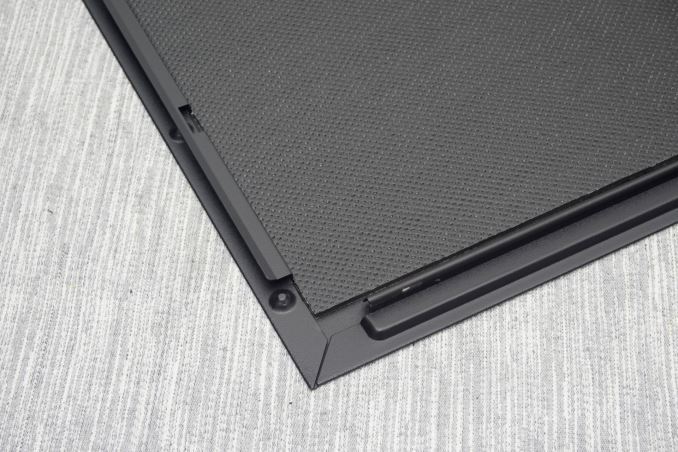
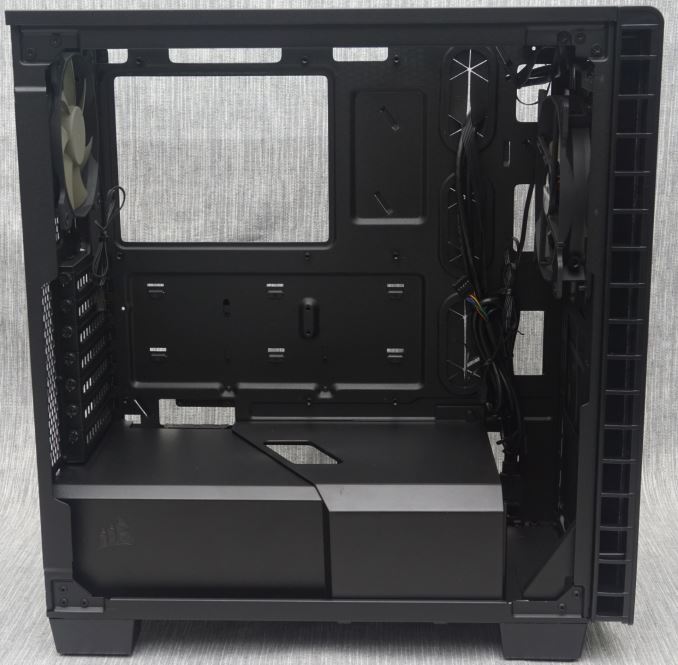
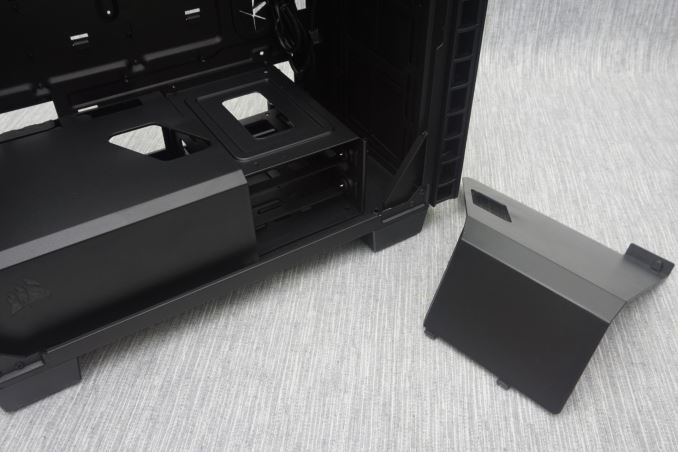
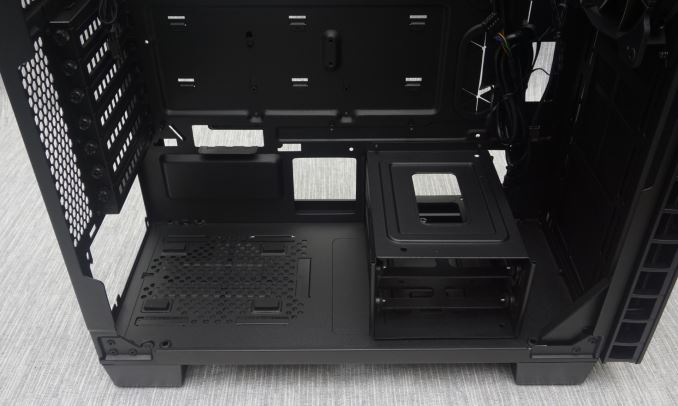

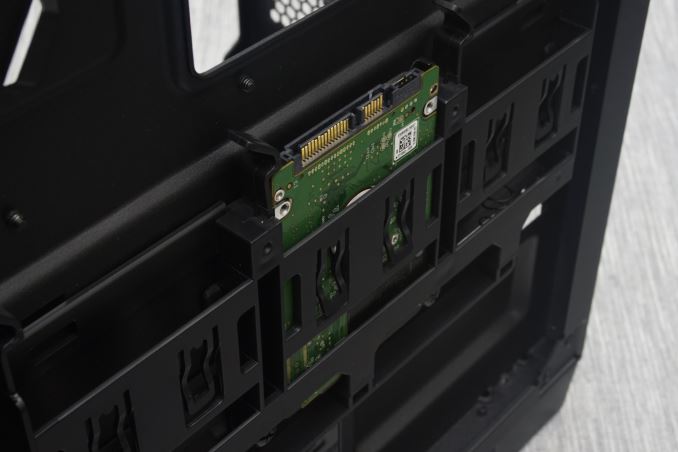
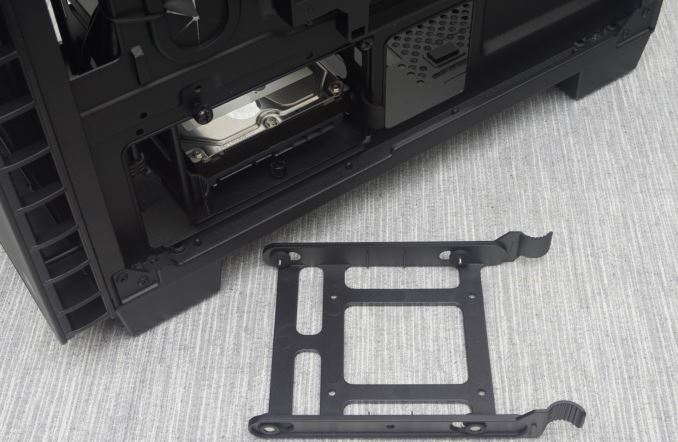
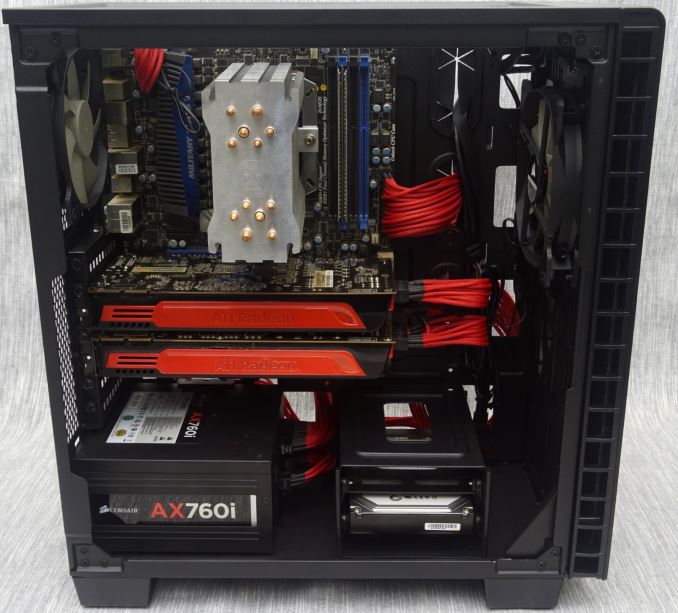
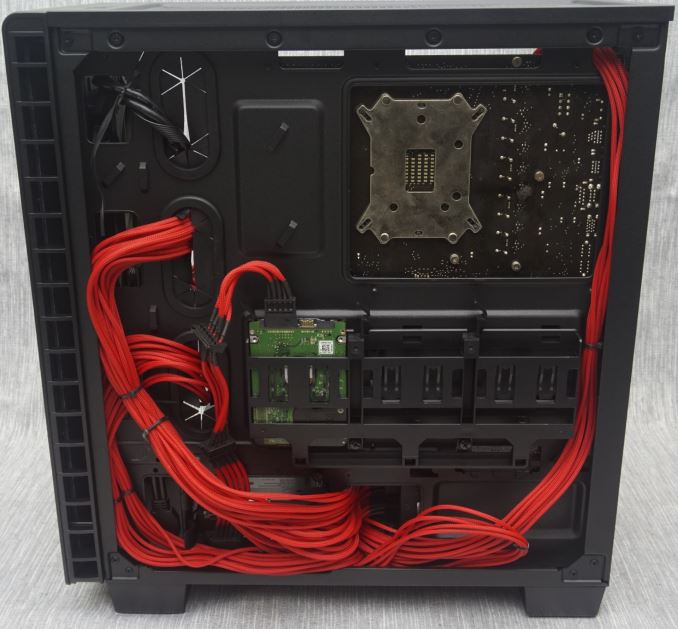








63 Comments
View All Comments
niva - Friday, April 29, 2016 - link
My Antec TITAN 650 is still in use, I don't think I'll ever need/want another case for a workstation... but yeah, it does make my back hurt thinking about it :)kmmatney - Friday, April 29, 2016 - link
I am still using my P182 from 2007. I'm been wanting to replace it for the last 4 years, but always spend the money on cpu or video card upgrades instead. I clean and oil the fans 3 years or so, and still have the originals. About the only thing that wears out on a case (besides the fans) are the front USB ports, and mine barely work. There are no 2.5" drive mounts, so my 2 SSDs are mounted with tie straps. It's big and heavy, but virtually silent, and keeps everything cool. I hate the stupid divider between the motherboard and PSU compartments, but other than that it's still a nice case. I've always felt monitors and cases are worth spending a little extra on, as they can last so long.Valantar - Sunday, May 1, 2016 - link
What happened to Antec, really? Ten years ago, they were the bee's knees when it came to stylish, quiet, high-performing cases. These days, they're hardly relevant at all. I remember when the Fractal Define R3(?) first came to market, and everyone was raving that "it's a P180 for half the price!" Did Antec's R&D department die of shock? The P280 looks half decent, but it's huge and unwieldy, and has some odd solutions. The P183 looks like it was designed in 2005, and is hideous compared to the P180. Don't even mention the P193. And their other cases? Blergh.Jeff7181 - Friday, April 29, 2016 - link
No external 5.25 inch bays? Really? Optical media is not THAT dead...jardows2 - Friday, April 29, 2016 - link
I would think without the 5.25 bays, it could have been designed a bit smaller. Wouldn't fit EATX that way, but not sure there is a big market for enthusiast EATX motherboards and compact cases like this.Black Obsidian - Friday, April 29, 2016 - link
There isn't really much space to be saved without sacrificing other use cases. Making the case less tall or less wide isn't really possible, as there's already no slack room to speak of. Reducing depth by more than 1" means sacrificing front-mounted radiators, long video cards, or both.Compared to, say, the Corsair 450D, the 400Q already trims 2.8" of height and 1.3" of depth. It's 0.2" wider, but that's just as well, given that the 450D was a bit tight on space for cables behind the motherboard tray.
Realistically, if you want a smaller case, you'll have to accept the mATX form-factor, with the trade-offs that entails.
jardows2 - Friday, April 29, 2016 - link
Even with mATX, it seems that any case forgoing the 5.25 drives do not make use of that deletion to save space. The cases either have the 5.25 drive bays, or might as well due to the size. It isn't until you get to mITX sized cases that the space savings gets fully realized, and even then, there are some rather large mITX cases.Black Obsidian - Friday, April 29, 2016 - link
You *are* saving space by forgoing the 5.25" drives, though. Look at my comparison above; the 450D has 2x 5.25" bays, which together are 3.2" tall. The 400Q omits those, and is 2.8" shorter. There's literally no more space to be saved, because the interior height is the sum of ATX PSU + ATX motherboard + 25mm top fan.To get any smaller while still supporting the same basic component set would require Time Lord science.
jardows2 - Friday, April 29, 2016 - link
I compare this to my NZXT Source 210 case, which, I know, is a budget case. This Corsair is taller and wider than my case by about an inch each way (height difference may be simply the large feet of the 400Q). It is about 3" less in depth. For that mere 3" of depth, I lose 3 5.25" external bays, and 3 internal 3.5" bays. I would think that it would be possible to make an even more compact ATX case than the 400Q with the elimination of the 5.25" bays.Ninhalem - Friday, April 29, 2016 - link
Grab an external optical drive if you need one that badly, or go for some of the higher end carbide or obsidian series for the 5.25" bay. Media consumption is almost exclusively streaming now.